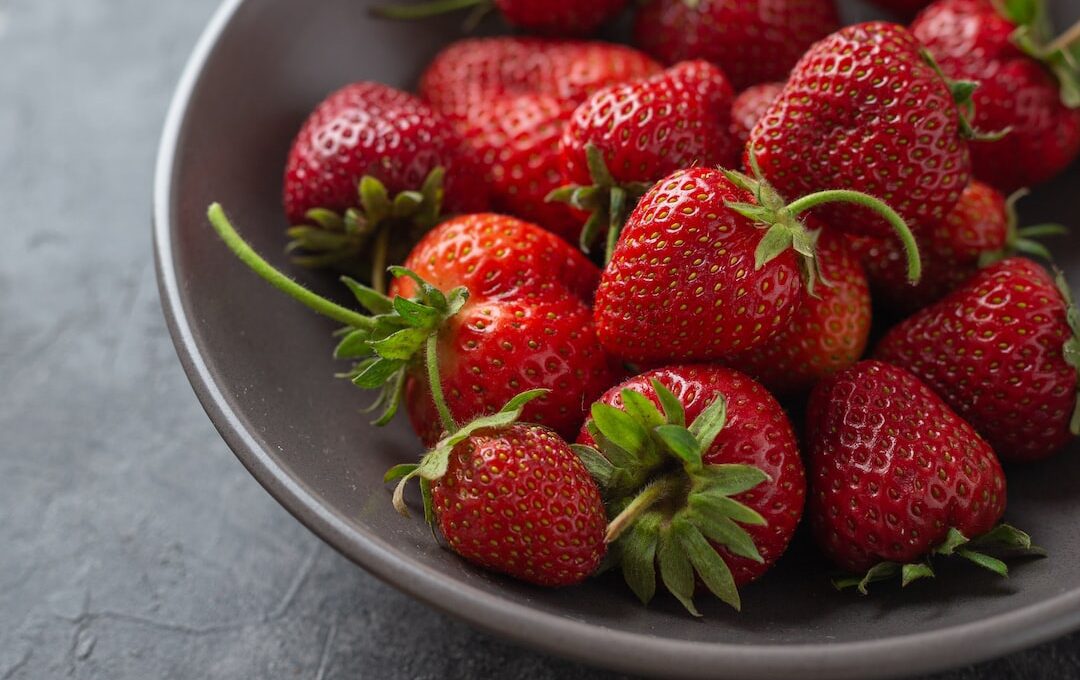Are you a strawberry lover and want to grow your own delicious berries at home?
One important aspect of strawberry care is knowing how often to water them. Proper watering is crucial to ensure the health and productivity of your strawberry plants.
In this article, we will guide you on understanding the watering needs of strawberries and provide tips to help you maintain their well-being. You will learn about different watering techniques and methods, as well as signs of overwatering and underwatering to watch out for.
We will also discuss how to adjust watering frequency based on various factors. Whether you are growing strawberries in the ground or in containers, we have got you covered.
By the end of this article, you will have the knowledge and tools to water your strawberries safely and effectively, ensuring a bountiful harvest of juicy, sweet berries.
Quick Summary
- Strawberry plants need about 1-1.5 inches of water per week.
- Adjust watering frequency based on weather conditions, such as hot and dry or periods of heavy rain.
- Monitor soil moisture regularly by sticking your finger into the soil.
- Mulching around plants helps retain moisture and reduces watering frequency.
Understanding Strawberry Watering Needs
If you’re wondering how often you should water strawberries, it’s essential to understand their specific watering needs. Strawberries are delicious and delicate fruits that require a consistent watering schedule to thrive. To ensure their optimal growth and fruit production, you need to establish a regular watering routine.
The key to a successful strawberry watering schedule is finding the optimal watering frequency. Generally, strawberries need about 1-1.5 inches of water per week, which can be achieved through a combination of rainfall and supplemental watering. However, factors like temperature, soil type, and humidity can influence their water requirements.
During hot and dry weather, you may need to water your strawberries more frequently to prevent the soil from drying out. Aim for watering them every 2-3 days, ensuring the soil is evenly moist but not waterlogged. On the other hand, during cooler and rainy periods, you can reduce the frequency to avoid overwatering, which can lead to root rot.
It’s crucial to monitor the moisture levels in the soil regularly. Stick your finger about an inch deep into the soil, and if it feels dry, it’s time to water. Additionally, mulching around the plants can help retain moisture and reduce the frequency of watering.
By understanding the strawberry watering schedule and providing the optimal watering frequency, you can ensure the health and productivity of your strawberry plants. Remember, consistency is key for their safety and success.
Watering Strawberry Plants
Regularly watering strawberry plants is crucial for their healthy growth and abundant fruit production. Understanding strawberry growth and maximizing fruit production are key factors in determining the watering needs of these plants.
To ensure optimal growth, it’s important to water strawberry plants deeply and consistently. This means providing enough water to penetrate the root zone, typically about 1 to 2 inches per week, depending on the weather conditions.
When watering your strawberry plants, it’s important to avoid overwatering, as this can lead to root rot and other fungal diseases. To prevent overwatering, it’s recommended to water the plants in the morning, allowing the excess moisture to evaporate throughout the day. Additionally, it’s essential to provide good drainage for the plants, as strawberries prefer well-drained soil.
To maximize fruit production, it’s also important to water the plants during fruit formation. This is when the plants require the most water, as the developing fruits need ample moisture to grow and ripen properly. During this stage, it’s best to water the plants more frequently, ensuring that the soil remains consistently moist.
By understanding the watering needs of strawberry plants and following these guidelines, you can promote healthy growth and maximize fruit production. Remember to water your plants regularly and provide adequate drainage to ensure their overall well-being.
Watering Techniques and Methods
When it comes to watering your strawberry plants, there are a few key techniques and methods to keep in mind.
First, make sure to water at the base of the plants rather than from above to avoid wetting the leaves and potentially causing disease.
Second, consider using a drip irrigation system to provide a slow and steady supply of water directly to the roots.
Lastly, mulching around the plants can help retain moisture in the soil and prevent evaporation.
Watering at the Base of Plants
To maintain healthy strawberries, make sure you water them directly at the base of the plants. This watering technique ensures that the water goes directly to the roots, where it’s needed the most. Here are three important reasons why watering at the base is beneficial for your strawberries:
-
Avoiding foliage wetness: Watering at the base helps prevent the leaves from getting wet, reducing the risk of fungal diseases like powdery mildew. Foliage wetness can promote the growth of harmful pathogens, which can harm your plants.
-
Conserving soil moisture: By watering at the base, the water can penetrate the soil deeply, ensuring that the roots receive an adequate water supply. This helps conserve soil moisture, especially during hot and dry periods when water evaporates quickly.
-
Preventing fruit rot: By keeping the foliage dry, you also reduce the chances of fruit rot. Wet leaves can create a breeding ground for mold and bacteria, which can quickly spread to the fruits.
So remember, for healthy strawberries, water them directly at the base to promote their overall well-being and minimize the risk of disease.
Using Drip Irrigation Systems
Using a drip irrigation system is an effective way to ensure that your strawberry plants receive water directly at the base, maximizing their health and minimizing the risk of disease.
Drip irrigation benefits strawberry plants by providing a slow and consistent water supply, preventing overwatering and water runoff. This method also reduces the likelihood of foliar diseases, such as powdery mildew, as the leaves remain dry.
To install a drip irrigation system for your strawberries, start by laying out the mainline along the rows of plants. Attach drip emitters to the mainline, spacing them evenly to distribute water evenly. Use stakes or clips to secure the tubing in place.
It is important to regularly check the system for any leaks or clogs and adjust the water flow as needed. With a drip irrigation system, you can ensure that your strawberries receive the right amount of water, promoting their growth and overall health.
Mulching to Retain Moisture
To ensure the health and productivity of your strawberry plants, it’s crucial to retain moisture in the soil. This brings us to the current subtopic: mulching to retain moisture.
Mulching offers several benefits for your strawberries. Firstly, it helps to prevent water evaporation, keeping the soil consistently moist. Secondly, it acts as a barrier, reducing weed growth and competition for water.
When it comes to mulching options, there are various alternatives you can consider. Organic mulches like straw or wood chips work effectively, providing insulation and retaining moisture. Additionally, you can use plastic mulch, which creates a barrier against weeds and conserves water.
Whichever option you choose, ensure that the mulch is spread evenly around the plants, leaving a space around the crown to avoid rot.
By incorporating mulching into your strawberry care routine, you’ll enhance moisture retention and promote the safety and wellbeing of your plants.
Signs of Overwatering and Underwatering
If you notice wilting leaves and yellowing of the lower leaves, it’s a sign that you may be overwatering your strawberries. Overwatering can be harmful to your plants and can lead to root rot, which can ultimately kill them. To prevent overwatering, it’s important to mulch around your strawberry plants. Mulching helps retain moisture in the soil, reducing the need for frequent watering. Additionally, it helps regulate soil temperature and suppresses weed growth, which can compete with your strawberries for water. Using organic mulch, such as straw or wood chips, is recommended as it breaks down over time, adding nutrients to the soil.
On the other hand, underwatering can also cause problems for your strawberry plants. If you notice dry, brittle leaves or if the soil feels dry to the touch, it’s a sign that you may not be watering your plants enough. Underwatering can lead to stunted growth and reduced fruit production. To avoid this, make sure to water your strawberries regularly, especially during hot, dry weather. Aim to provide about 1-1.5 inches of water per week, either through rainfall or irrigation. It’s important to water deeply, allowing the water to penetrate the soil and reach the roots. Using a soaker hose or drip irrigation system can help ensure that the water is delivered directly to the roots, minimizing evaporation and water waste.
By following these guidelines, you can prevent overwatering and underwatering, ensuring the health and productivity of your strawberry plants. Remember, proper watering is essential for the safety and success of your crop.
Adjusting Watering Frequency
To adapt to weather conditions, you should adjust your watering frequency for strawberries. If it’s hot and dry, you may need to water more often to prevent the plants from drying out. On the other hand, during periods of heavy rain, you may need to reduce watering to avoid overwatering and root rot.
Additionally, adjusting for soil type and drainage is important. Sandy soil drains quickly and may require more frequent watering, while clay soil holds moisture longer and may need less frequent watering.
It’s essential to find the right balance to ensure your strawberries receive the proper amount of water for healthy growth.
Adapting to Weather Conditions
When it’s scorching hot outside, it’s crucial to adjust your strawberry watering schedule accordingly to ensure their survival. Adapting your watering schedule to the weather conditions is essential for the health of your strawberries. Monitoring the weather and adjusting the frequency of watering can help prevent both under and over watering, which can be detrimental to the plants.
To help you understand how weather conditions affect your strawberry watering, refer to the table below:
| Weather Conditions | Watering Frequency |
|---|---|
| Hot and dry | Increase |
| Rainy | Decrease |
| Humid | Maintain |
| Windy | Increase |
| Cold | Decrease |
By adapting your watering schedule based on the weather, you can ensure that your strawberry plants receive the proper amount of water they need, promoting their survival and growth. Remember, keeping your strawberries hydrated in extreme weather conditions is vital for their safety and overall well-being.
Adjusting for Soil Type and Drainage
Understanding the impact of soil type and drainage on your strawberry plants is crucial for ensuring their optimal growth and survival. Adjusting your watering schedule according to these factors is essential to maintain the right soil moisture levels.
If you have sandy soil, which drains quickly, you may need to water your strawberries more frequently to prevent the soil from drying out. On the other hand, if you have heavy clay soil, which retains moisture, you should water less often to avoid waterlogged roots.
Regularly monitor the soil moisture levels by sticking your finger about an inch into the soil. If it feels dry, it’s time to water, but if it feels moist, hold off for a few more days.
By adjusting your watering schedule based on your soil type and drainage, you can ensure that your strawberry plants receive the right amount of water for their healthy growth and development.
Is the Watering Schedule for Strawberries the Same as for Shrubs?
Is the watering schedule for strawberries the same as for shrubs? It’s important to note that watering shrubs frequently may not be suitable for strawberries. Strawberries have shallow roots and require consistent moisture, but overwatering can lead to root rot. On the other hand, shrubs typically have deeper roots and may require less frequent watering. Therefore, it’s essential to consider the specific needs of each plant when determining their watering schedules.
Watering Tips for Container-Grown Strawberries
When growing strawberries in containers, it’s important to understand their unique watering needs. Containers tend to dry out more quickly than garden soil, so you’ll need to water your strawberries more frequently. Choosing the right container and soil mix is also crucial for proper drainage and moisture retention.
Unique Watering Needs of Containers
To ensure the success of your container-grown strawberries, it’s crucial to be mindful of their unique watering requirements. Container gardening comes with its own set of challenges, and watering is no exception. When it comes to watering your container-grown strawberries, it’s important to strike the right balance.
Overwatering can lead to root rot, while underwatering can cause the plants to wither and die. So, how often should you water your strawberries in containers? The answer depends on various factors such as the size of the container, the type of soil used, and the weather conditions.
As a general rule of thumb, check the moisture level of the soil regularly by sticking your finger about an inch deep. If it feels dry, it’s time to water. Remember, consistency is key when it comes to container watering, so aim to water your strawberries regularly, ensuring the soil is evenly moist but not waterlogged.
Choosing the Right Container and Soil Mix
Finding the perfect container and soil mix is essential for ensuring the optimal growth of your container-grown strawberries. When choosing a container, make sure it has drainage holes to prevent waterlogging, which can lead to root rot. Additionally, select a container that’s large enough to accommodate the root system and allows for proper air circulation.
As for the soil mix, opt for a well-draining blend that retains moisture without becoming waterlogged. A good soil composition for strawberries consists of equal parts of peat moss or coconut coir, perlite or vermiculite, and compost or well-rotted manure. This mixture provides the necessary nutrients, aeration, and moisture retention that strawberries need to thrive.
Remember, choosing the right container and soil mix is crucial for the health and productivity of your container-grown strawberries.
Other Factors Affecting Strawberry Health
If you neglect to consider other factors affecting strawberry health, you may find yourself heartbroken as your precious plants wither and die. To ensure a bountiful strawberry yield and maintain the health of your plants, it’s important to pay attention to these three key factors:
-
Soil pH: Strawberries prefer slightly acidic soil with a pH level between 5.5 and 6.5. If the soil pH is too high or too low, it can affect nutrient availability and hinder the plant’s ability to absorb essential minerals. Test your soil regularly and amend it accordingly to maintain the ideal pH level for your strawberries.
-
Sunlight exposure: Strawberries thrive in full sun, requiring at least 6 to 8 hours of direct sunlight each day. Insufficient sunlight can lead to weak plants, reduced fruit production, and increased susceptibility to diseases. Ensure that your strawberry plants are placed in a location where they receive adequate sunlight throughout the day.
-
Proper spacing: It’s crucial to provide enough space between strawberry plants to promote good air circulation and prevent the spread of diseases. Overcrowding can lead to the development of fungal infections and rot. Follow the recommended spacing guidelines for the specific strawberry variety you’re growing.
By considering these factors and taking the necessary precautions, you can safeguard your strawberry plants, maximize their yield, and enjoy a thriving strawberry patch.
Summary and Troubleshooting Tips
Remember, maintaining the health of your strawberry plants is essential, so here are some troubleshooting tips to help you along the way.
When it comes to watering your strawberries, it’s important to find the right balance. Underwatering can lead to dry and wilted plants, while overwatering can cause root rot and fungal diseases. To optimize your watering schedule, there are a few common issues to troubleshoot.
First, make sure you’re watering your strawberries deeply and evenly. This encourages the roots to grow deep into the soil, making the plants more resistant to drought. Avoid shallow watering, as it only wets the top layer of soil, leaving the roots vulnerable.
Second, be mindful of the weather conditions. Adjust your watering schedule according to the rainfall and temperature. During hot and dry periods, you may need to water more frequently, while cooler and wetter weather may require less watering.
Lastly, pay attention to the signs your plants are giving you. If the leaves are turning yellow or drooping, it could be a sign of overwatering. On the other hand, if the leaves are wilting and the soil is dry, your plants may be underwatered.
By troubleshooting these common issues and optimizing your watering schedule, you can ensure the health and productivity of your strawberry plants. Remember, a little bit of attention and care go a long way in keeping your strawberries thriving.
Frequently Asked Questions
Can I water my strawberries with tap water, or is it better to use filtered or distilled water?
You can water your strawberries with tap water, but using filtered or distilled water is better. Tap water may contain chemicals that can be harmful to the plants. Filtered or distilled water ensures the safety of your strawberry plants.
What is the best time of day to water strawberry plants?
To ensure the health of your strawberry plants, water them during the early morning or late afternoon. This allows the soil to absorb moisture without the risk of evaporation, ensuring the best watering techniques and maintaining proper soil moisture.
Can I use a sprinkler system to water my strawberry plants, or is it better to water them by hand?
It is better to water your strawberry plants by hand rather than using a sprinkler system. Hand watering allows you to control the amount of water and ensure that it reaches the roots efficiently, reducing the risk of overwatering and potential damage to the plants.
How can I tell if my strawberry plants are not getting enough water?
To ensure your strawberry plants are properly hydrated, look out for signs of dehydration such as wilted leaves and dry soil. Water them deeply and evenly, avoiding overwatering or allowing the soil to completely dry out.
Are there any natural remedies or homemade solutions that can help retain moisture in the soil for strawberry plants?
To retain moisture in the soil for strawberry plants, try using natural remedies like mulching with straw or using homemade solutions like compost tea. These methods can also help prevent fungal diseases and control pests safely.
Conclusion
In conclusion, remember to water your strawberries regularly to keep them healthy and productive. Pay attention to their specific watering needs and adjust accordingly.
Overwatering can lead to root rot, while underwatering can cause the plants to become stressed and produce smaller fruits. Use proper watering techniques and methods, and be mindful of signs of overwatering or underwatering.
If you’re growing strawberries in containers, ensure adequate drainage and adjust watering frequency as needed.
By following these tips, you’ll be well on your way to growing delicious strawberries.









